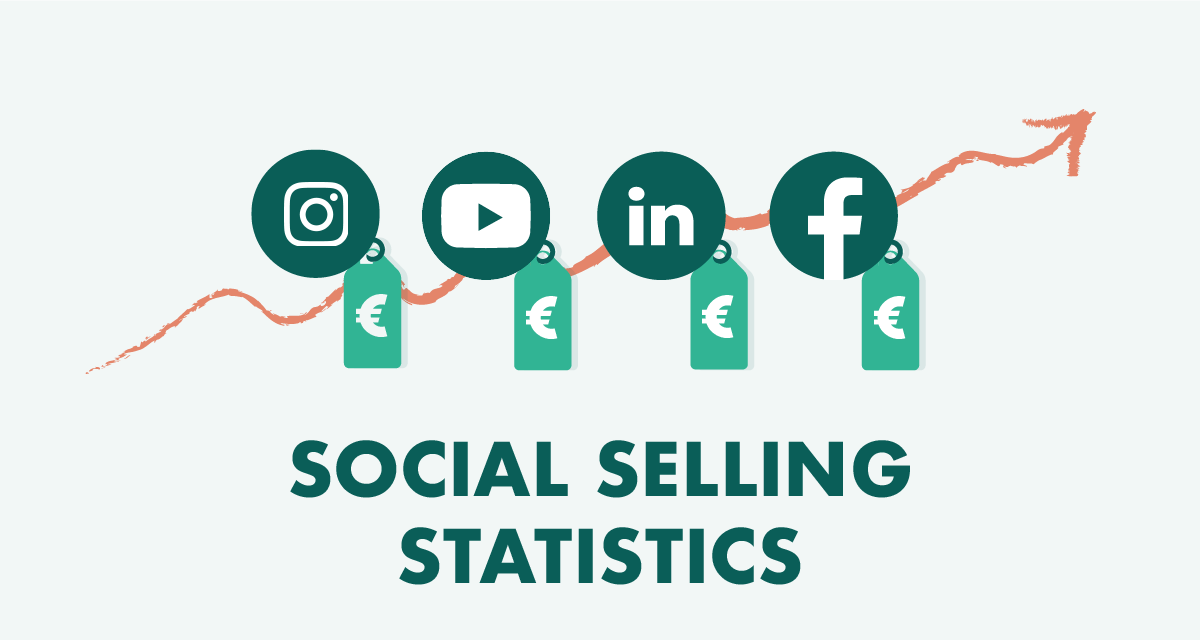Software developer Buzzbuilder claims that only 5 percent of people remember statistics, compared to the 63 percent of people who remember stories. However, I contend that the amount of recall depends on why you’re citing statistics. If you’re interested in improving your business, you need to know what the relevant numbers are so you can tell whether you are actually seeing success in certain areas of business, or just wasting your time.
When you sell online, you have to know that your product lines are relevant to your target market. You also need to know that you are using the right marketing strategies to reach that target market. And finally, you need to know what the target market is spending the most money on within your particular niche.
Will you remember those stats then? You’ll probably write them down, at least.
Below are some of the most vital online sales statistics, along with a few reasons why they’re important. Unless you plan to sell stuff online for free, these are the numbers (all for 2014 unless stated otherwise) that you need to know in order to be successful.
But before that, here is something to chew on: in 2012, only 30 percent of the world’s population had Internet access. No big deal, right? Just a paltry 2 BILLION people! In North America alone, Internet penetration is over 77 percent. Estimates predict that by 2017, approximately 10 percent of all U.S. retail sales will happen online. That’s a total cash equivalent of $370 billion. And some call that a conservative estimate.

By the Numbers:
E-commerce statistics are some of the most plentiful around. Businesses and market researchers alike are eager to discover how people are behaving in their respective online communities. Here is an impressive collection of facts and figures that all concern the serious online seller quite directly:
- 97 percent of mobile shopping carts were abandoned in 2014; 75 percent of desktop shopping carts were abandoned in 2013. Shopping abandonment is too much like a food fight: so much time and effort wasted at the last minute. As an online seller, you need to make your user experience so good that they’ll take that final step
- Before making a purchase, 84 percent of consumers check out social media, and 46 percent consult reviews and/or blogs. This illustrates why you need to have a presence on social media networks and participate in blogs by commenting or guest posting. It also shows you how important it is to get good reviews from your customers (not so easy for dropshippers, because fulfillment is out of their control)

- 80 percent of people who use the Internet buy online. Trust in e-commerce has risen immeasurably since the humble beginnings of the internet. The boom is online retail is not likely to subside anytime soon.
- 71 percent of people believe they will get better prices online. Want to seal the deal on a sale? Try your hardest to confirm this belief (without destroying your profit margins, of course).
- 65 percent of U.S. consumers owned a smartphone in 2013, while 29 percent owned a tablet. However, more tablet owners make online purchases than smartphone owners (70 percent opposed to 47 percent). this is identified by Forrester Research as a major factor for the increase in online selling. Because people can spend more time online with their smartphones and tablets, mobile e-commerce is on the rise. Make sure your site is mobile friendly.
- 65 percent of online customers spend more than 16 minutes to canvass for better deals for products. Make your offerings alluring so that they’ll go back to you. The emphasis should always be on your Unique Selling Proposition, because the competition is too fierce to compete on price alone.
- 51 percent of consumers abandoned their shopping carts because they were uncomfortable about giving their financial details; 47 percent thought the checkout process took too long and 41 percent thought the credit card information entry was too difficult. User experience, plus the need for having a recognized secure payment system, continue to be major factors in any e-commerce site’s sales strategy.
- 44 percent of online shoppers go to a search engine first. This is why content marketing strategies, as well as PPC, are crucial for marketing success.
- Consumers spend 30 percent when they buy items that offer free shipping; 61 percent of shoppers were “somewhat likely” to abandon their cart if free shipping was not available. We have emphasized the importance of free shipping in clinching an online sale, but we thought it would solidify it a little more for you with this little tidbit
- 28 percent of small businesses in the U.S. are selling online. At this point, you still have a fighting chance of doing a sweet deal before 72 percent of your small business peers catch on to the obvious way the market is moving.
- Mobile e-commerce is expected to increase by 21.3 percent by 2017, rising from $1.5 trillion in 2013 to $3.2 trillion in 2017; in the U.S., mobile e-commerce is expected to reach $638 billion in 2018. If you are selling in the U.S. only, you could be making a lot more annually by implementing a mobile e-commerce strategy right now.
- In 2014 alone online shopping and e-commerce grew 20 percent and is currently valued at $1.5 trillion worldwide, $304.1 billion in the U.S., and $216 billion in the U.K. That’s $ 1.1 billion a week in August of last year. The online share of the retail market is growing everywhere. In other words, the U.S. is not your only market (though it remains one of the biggest). Consider this chart:

- The retail market share for online purchases saw a 4.8 percent increase (18.5 percent in 2014 from 13.7 percent in 2013). At 18.5 percent, we are talking of a lot of moolah, so just because we put it way down here doesn’t mean it’s the least important statistic you should consider when planning your online selling strategy. In fact, this particular number tells you that online selling is a growing retail market, and only projected to grow more as more people continue to become more comfortable with digital transactions.
The Takeaway
It takes a lot of effort and resources to come up with accurate and relevant statistics; we’re making it easy for you by posting the important numbers to help you in your online selling and dropshipping business. But just like any information, it’s just brain clutter if you don’t do anything to give it value. It’s the action the information inspires that makes it vital. Otherwise, you’ll be muddling along not knowing what you’re doing wrong. And that keeps you from making a righteous killing with your online selling.
Retail is all about how much you’re willing to do to move your products. The numbers we have given you represent quite a large chunk of the online retail business, from web design to marketing and promotions. It’s a lot to get done, but knowing what you know now, you should be able to get off your behind and get going. If it doesn’t, then you’re in the wrong business.
Did any of these statistics surprise you? How will you use them to adjust your sales/marketing strategies going forward? Let us know in the comments.
I’m telling you about this, because I believe in giving information regarding PPC advertising
forward,
I don’t know how much longer people accepting new technology , so you had better check it out now if you can.
Just click the link below to get started:
Discover more from Personal Blog of Richard Tong
Subscribe to get the latest posts sent to your email.




I’m glad I found this webpage. I was searching for another website when I stumbled on it. Nice work.
I’m glad I came across this webpage. I was searching for something else when I stumbled on it. Nice work.